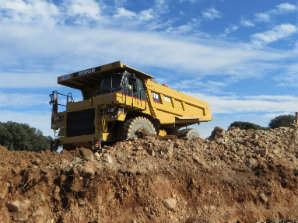
Australia-based Berkeley Energia has begun construction on its Salamanca uranium mine in northwestern Spain, the company said on 5 January.
Berkeley noted that the timing coincides with an increase in the price of uranium from a 12-year low of $17.75/lb in early December. Salamanca could produce 4.4m lbs of uranium a year at its peak during the 14 years of operation based on probable resources, the company said. First uranium production is expected in 2018.
Berkeley Energia is depending on an expected rise in uranium prices that will be triggered by its current over-supply becoming a serious shortfall in the next few years. With many of Europe’s reactors up for renegotiation on their fuel contracts and as many as 60 new reactors planned in China in the coming years, demand is set to increase, and the Salamanca mine is the only one of its size coming online.
The mine will be the biggest of its kind in Europe and will provide enough uranium to meet 10% of Europe’s needs. The $100m Salamanca project will provide 700 construction jobs as the mine comes online, and once fully operational will support 450 permanent staff and, it is hoped, 2000 more indirectly, the company said.
Nuclear leads power generation in Spain
Meanwhile, nuclear generation accounted for 21.38% of Spain's total electricity output in 2016, up from 20.34% in 2015 and more than any other source, according to the nuclear industry group Foronuclear, quoting statistics from grid operator Red Eléctrica de España (REE).
Wind accounted for 18.19% of total electricity output and hydro for 14.92%. Foronuclear said net electrical output from Spain’s seven commercial nuclear reactors increased 2.4% in 2016, compared with 2015, to 56.095TWh. Spain’s reactors have a combined generating capacity of 7865MWe, representing 7.45% of total installed capacity. Foronuclear said the Spanish nuclear park operates on average for 86.31% of the total hours in a year.
Photo: Salamanca operations (Credit: Berkeley Energia)


